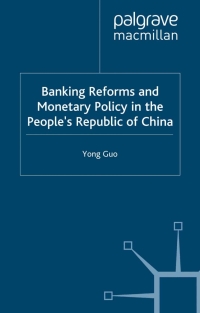Question
Hello once again can you kindly explain to me the percentage they made in this examples because i want to know how they get those
Hello once again can you kindly explain to me the percentage they made in this examples because i want to know how they get those totals in the figure they made because i have reporting in class and i want to study each for me to understand fully what is my reporting to my classmates next day again thank you so much to one who answer this i am always thankful god bless.
Subject : VALUATION CONCEPTS AND METHOD
An Example of Discounted Cash Flow Analysis First, understand that analysts generally use the weighted average cost of capital (WACC) as the discount rate. WACC represents an organizations cost of capital. The equation to calculate WACC includes stock, bonds, and other forms of equity, as well as debt. Now, lets go over an example of discounted cash flow analysis so you can see how it might work for your organization. Lets say you run a tech company and want to explore the viability of building two new products. Your goal is to see which product will yield better returns. Your monetization method for the products will differ: For Project A, you'll launch in the market after one year and iterate as you go along. For Project B, you'll perform extensive research and development. You'll then sell to a larger company once the product is fully completed after five years.
Based on market research, you forecast the following cash flows for Project A over five years:
Year Cash Flow
0 6 million initial investment
1 4 million profit
2 8 million profit
3 8 million profit
4 4 million profit
5 0 (product becomes obsolete and must be replaced)
You then forecast the following cash flows for Project B over five years:
Year Cash Flow
0 6 million initial investment
1 0
2 0
3 0
4 0
5 28 million (product is sold to another company/investor)
Looking at the raw numbers, youll see that Project Bs product delivers more money overall (28 million versus 24 million). However, you must also calculate discounted cash flows. For analysis, youll use the following formula. Your companys WACC will be 9% for both projects.
NOTE: KINDLY EXPLAIN TO ME THIS EXPRESSION OF COMPUTATION I DONT KNOW HOW THIS MEANS.
1 2 n
CF1 CF2 CFn
DCF = ______ _____ ____
1 + r 1 + r 1 + r
WHERE:
CF = the cash flow for the given year.
CF1 is for one year, CF2 is for two.
CFn is for additional years
r = the discount rate
For Project A, here is what your discounted cash flows will look like over five years:
Year Actual Cash Flow Actual Cash Flow
1 4 3,669,724 - what is the computation how they get the total?
2 8 6,733,439 - what is the computation how they get the total?
3 8 6,177,606 - what is the computation how they get the total?
4 4 2,833,701 - what is the computation how they get the total?
5 0 0
For Project A, the sum of discounted cash flows equals 19,414,470. If we subtract the initial investment of 6 million, you get 13,414,470. Thats the net present value (NPV) of Project As investment.
Now, lets find the net present value of Project Bs investment
Year Actual Cash Flow Actual Cash Flow
1 0 0
2 0 0
3 0 0
4 0 0
5 28 million 18,198,079 - what is the computation how they get the total?
For Project B, the sum of discounted cash flow equals 18,198,079. If we subtract the initial investment of 6 million, you get 12,198,079. Thats the net present value of Project Bs investment. Therefore, Project A is the more profitable of the two projects. Although the product wont deliver as much actual cash flow, the net present value of the investment is higher when you account for the time value of money. From a purely financial standpoint, DCF analysis shows that Project A is more than $1 million better. So, we can see how this analysis can help make wise investment decisions.
Step by Step Solution
There are 3 Steps involved in it
Step: 1

Get Instant Access to Expert-Tailored Solutions
See step-by-step solutions with expert insights and AI powered tools for academic success
Step: 2

Step: 3

Ace Your Homework with AI
Get the answers you need in no time with our AI-driven, step-by-step assistance
Get Started


